Here’s a list of my recommended sailing books.
Over the years, I have read and collected many sailing books. Unlike my paperbacks, which an e-book reader has replaced, these are all on board in hardback. They are either reference books like Ashley’s Book of Knots or make for interesting reading on passage. Or to refresh my weather interpretation skills. Sometimes, when I need mechanical or electrical help from experts. In addition to these books, I do have PDF versions of all the manuals for items on board, found at
| Picture | Author | Title | Description |
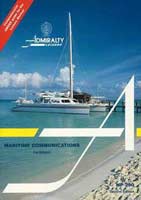 | Government Publication | Admiralty Maritime Communications (Caribbean including Florida) | This Admiralty publication is a reference book that has been discontinued without replacement since 2009, but I’ll still keep my old copy aboard. |
 | Originally Nathaniel Bowditch, LL.D. | The American Practical Navigator (2002 Bicentennial edition) | The revamped classical navigation book. I’ve got this as a 41 Mb large PDF as a backup copy on this website, it can be downloaded on the manuals page |
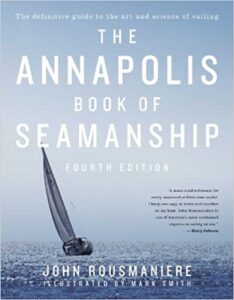 | John Rousmaniere | The Annapolis Book of Seamanship (3rd edition) | The American sailing book by which all others are measured. An excellent reference book which every boat should have aboard. |
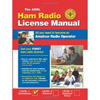 | Ward Silver | The ARRL Ham Radio License Manual | The American textbook covering the subject knowledge areas for the US HAM license test. |
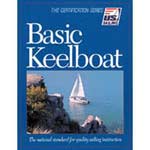 | ASA | (ASA 101) Basic Keelboat | The accompanying ASA textbook for the 101 Basic Keelboat course and certificate. |
 | ASA | (ASA 103 ) Basic Coastal Cruising | The accompanying ASA textbook for the 103 Basic Coastal Cruising course and certificate. |
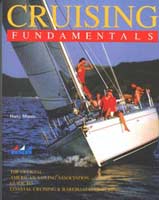 | ASA | (ASA 104) Bareboat Cruising | The accompanying ASA textbook for the 104 Bareboat Cruising course and certificate. |
 | Clifford W. Ashley | Ashley Book of Knots | This book is more of an encyclopædia of knots; it is considered the only absolute reference book, and knots are numbered by it, i.e., ABOK432. |
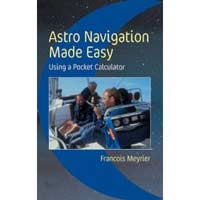 | François Meyrier | Astro Navigation Made Easy | This does as good a job as possible to make the complex subject of Astronavigation easy. |
 | Alan Watts | Basic windcraft: Using the wind for sailing | A good starter book on wind and weather. |
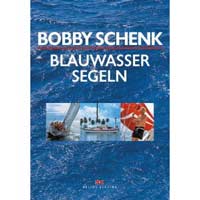 | Bobby Schenk | Blauwassersegeln | (German) Bobby Schenk is the most well-known and respected German author on blue water sailing, and the book goes into detail on all aspects of blue water sailing and world cruising, starting with the appropriate ship and gear selection and finishing with tactics and routing. |
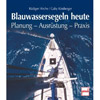 | Rüdiger Hirche & Gaby Kinsberger | Blauwassersegeln Heute | (German) The book is filled with anecdotal stories and pictures from these well-known German travelers and lecturers. |
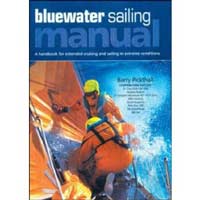 | Barry Pickthall | Blue Water Sailing Manual: A Handbook for Extended Cruising and Sailing in Extreme Conditions | While the title might sound long/winded, the book certainly isn’t, and I can recommend it for both style and content. |
 | Cornelis Van Rietschoten & Barry Pickthall | Blue Water Racing | Written by a 2-time winner of the Round the World races, it is a somewhat dated book, first published in 1985, and uses the 1978 Whitbread race as the basis for describing factors in racing. While I’ll never race sailboats, it does go into detail about crew, material, weather, and other issues at sea, and the points to consider are also valid for a cruiser and remain as valid today as they were 25 years ago. |
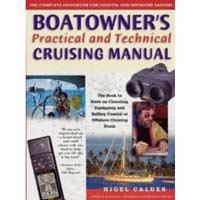 | Nigel Calder | Boat Owner’s Practical and Technical Cruising Manual: The Complete Handbook for Coastal and Offshore Sailors | Another of Nigel Calder’s books is enjoyable and informative reading. |
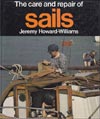 | Jeremy Howard-Williams | The Care and Repair of Sails | While the book is older and doesn’t cover very modern sails, it is an excellent reference work for anyone looking into maintaining and repairing sails and canvas aboard a sailboat. |
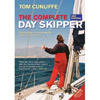 | Tom Cunliffe | The Complete Day Skipper (2nd Edition) | This is the standard textbook for the RYA “Day Skipper” qualification |
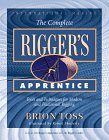 | Brion Toss | The Complete Rigger’s Apprentice | I purchased this book while I was considering replacing my wire standing rigging with modern materials, and I thought it might help. It turns out this book is now one of my favorite technical sailing books. Not only does he cover a wide range of topics related to rigging but his writing style makes the book easy and fun to read. This book should be read by anyone with an interest in lines of any type. |
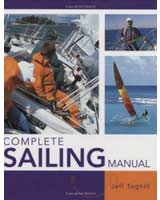 | Jeff Toghill | Complete Sailing Manual | I have to admit that I can’t recall the details on this book, and as of this writing, I’m far away from the boat library and can’t refresh my impressions. I’ll do that when I’m back aboard. |
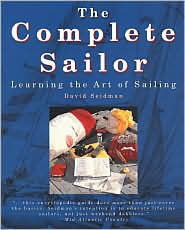 | David Seidman | The Complete Sailor: Learning the Art of Sailing | I purchased this book from Amazon and was a bit disappointed with the contents. This is not because the book is poorly written or incomplete, but it fits into the ‘beginner’ category, and I would rank it high in that category. It covers all of the significant aspects of sailing, but due to the breadth of material, the details and depth of explanation are limited—a great starting book for sailors, but nothing to keep onboard. |
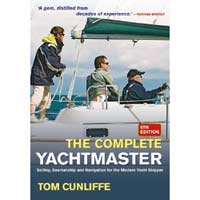 | Tom Cunliffe | The Complete Yachtmaster: Sailing, Seamanship and Navigation for the Modern Yacht Skipper (6th edition) | This is an excellent manual covering the subject areas for the RYA Yachtmaster examination. It is an excellent reference book for all topics, well-written, and easy to understand. This is one book that I frequently refer to and should be aboard any boat. |
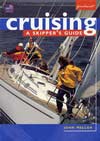 | John Mellor | Cruising – A Skipper’s Guide | A thin and concise paperback written for the skipper of a boat with a small crew. While not covering subjects in great detail, the author touches on the significant factors and does a good job of explaining expectations. Not necessarily a reference work, it is worthwhile reading nonetheless. |
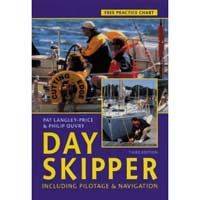 | Pat Langley-Price & Philip Ouvry | Day Skipper: including pilotage and navigation | I enjoyed reading this book and, while it is geared toward the RYA Day Skipper requirements, it is educational and worthwhile. |
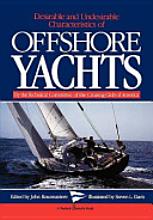 | John Rousmaniere, editor | Desirable and Undesirable Characteristics of Offshore Yachts | A wonderfully instructive book with articles written by experts on what to look for (and look out for) in yachts intended to go offshore. |
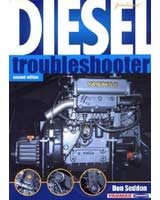 | Don Seddon | Diesel Troubleshooter (2nd Edition) | This is a valuable addition to the ship library as it goes into nitty-gritty detail on the diesel engine without requiring that one is a dyed-in-the-wool gearhead. |
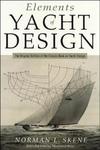 | Norman L. Skene | Elements of Yacht Design | This is one of the classic books on yacht design, initially published in 1938; while the book is a new issue with an introduction, the text is the original. Materials and processes for yacht making have changed so much since the book was written that much of the technical information is no longer applicable. Nonetheless, the elements of style and the use of mathematics in the design of many parts of boats remain valid today. I enjoyed reading it, but found the information in Principles of Yacht Design much more valuable and interesting. |
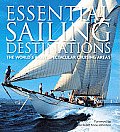 | Adrian Morgan (editor) | Essential Sailing Destinations: The world’s most spectacular cruising areas | A colorful volume ideal for reading at home during cold and rainy winter nights. |
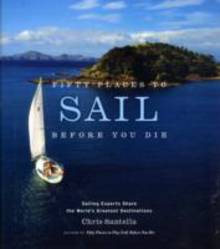 | Chris Santella | Fifty Places to SAIL before you die | A fun book to read while planning on where to cruise, detailing many out-of-the-way destinations that one is unlikely to visit but can always dream about. |
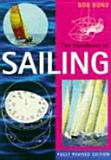 | Bob Bond | The Handbook of Sailing (2nd Edition) | This is another reference book I constantly use. It covers just about everything in sufficient scope and detail to remain a valuable addition to any shipboard library. |
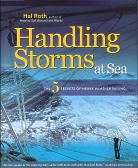 | Hal Roth | Handling Storms at Sea (the 5 secrets of heavy weather sailing) | An excellent book describing the progression of steps one can take as the weather at sea gets progressively worse. Full of more reference material than opinions, it makes fine reading, is very thought-provoking, and is a book I would recommend others read. |
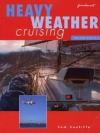 | Tom Cunliffe | Heavy Weather Cruising | Tom Cunliffe is one of the United Kingdom’s most respected and prolific writers. This paperback volume is a great reference for thinking about heavy-weather sailing and boat setup. Tom has many years of experience in sailing and this is reflected in the no-nonsense writing in this book, but many of the approaches detailed are limited to the more classic yachts (heavier with full keel) than what I am sailing and thus cannot be used. But apart from those aspects, I can recommend this book as a concise, succinct account of storms at sea. |
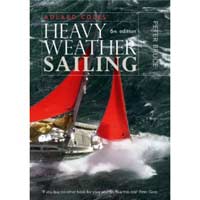 | Peter Bruce | Adlard Coles’ Heavy Weather Sailing (6th edition) | Adlard Coles (OBE, died 1985) wrote three editions of this classic tome, and there is no doubt in my mind that the 6th edition will not be the last. While this book might be somewhat overkill for the dinghy boater, I feel that no sailor should venture far from the docks without having read this book; it is the best book that I’ve seen on this subject, bar none. |
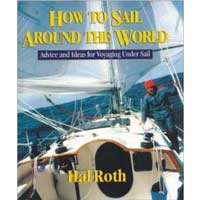 | Hal Roth | How to Sail Around the World: Advice and Ideas for Voyaging Under Sail | Another worthwhile book where I tended to form different conclusions than the author, but only when it comes to matters of taste and preference – his experience is vast. The facts are well presented, and overall, this is a book that can be re-read several times, where one gains a bit more knowledge on each pass. |
 | Colin Jarman | Knots in Use | I have a lot of trouble learning and remembering knots, so I have several books on the subject and take a bit from each. This is a small book, but with excellent illustrations. |
 | Egmont M. Friedl | Knoten und Spleißen: Eine audiovisuelle Anleitung | (German) At the 2010 Düsseldorf BOOT convention, I saw him demonstrate some splicing techniques and decided to purchase this book, both for the methods and the included DVD videos illustrating various knots, whippings, and splicing techniques. His videos are excellent and easy to follow. |
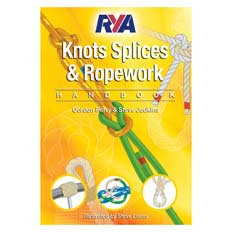 | Gordon Perry | RYA Knots, Splices and Ropework Handbook | This is an excellent book for daily use – what more can I say than that I need to buy another copy as I’ve broken the old one’s spine through too frequent use. |
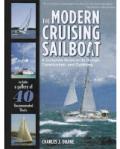 | Charles J. Doane | The modern Cruising Sailboat | This large, hardcover book, published in 2010, is a comprehensive guide to modern cruising sailboats, both monohulls and catamarans. I thoroughly enjoyed reading the book and pretty much devoured it in just a couple of sessions, except for the gallery of 40 recommended boats, which, as the author predicted, I disagreed with. This is a book I can recommend to anyone who is either thinking of cruising or planning to purchase a boat (whether for the first time or upgrading). |
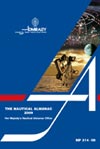 | UKHO and US Naval Observatory | The Nautical Almanac (2010) | Not much for casual reading, but without equal when it comes to the charts and tables used in navigation. |
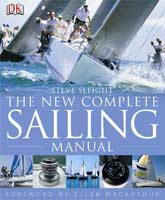 | Steve Sleight | The New Complete Sailing Manual | This is an excellent reference book which, while accessible to novices, covers sailing everything from dinghies to ocean cruisers. This is one of the books I’ll grab off the shelf first when I have to look something up. I even bought the German translation and enjoyed reading it, at least until I realized I had a duplicate book. |
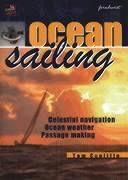 | Tom Cunliffe | Ocean Sailing | This small paperback is written expressly for those intending to sail out of sight of land. The majority of the book is devoted to navigation using classical methods on ocean passages, but it also touches on weather and passage planning. I don’t quite feel ready to learn how to use my sextant correctly, but when I do, I know that I’ll be delving into this book again. |
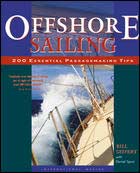 | William Seifert & Daniel Spurr | Offshore Sailing | An excellent book full of tips that may or may not apply to a given boat, but are excellent pointers about things to look into when selecting and outfitting a boat for offshore passage making. |
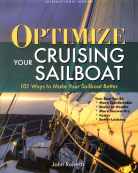 | John Roberts | Optimize your Cruising Sailboat | This paperback book was a bit of a disappointment, as it covered, on the whole, mainly cosmetic modifications to production boats and didn’t yield much food for thought. The only thing that I thought about after going through the book was putting in an overhead cabinet in the galley in the space over the sink, which, if I end up making such a cabinet, will have made the book worthwhile. |
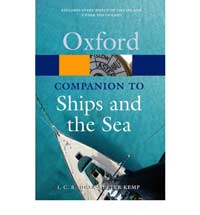 | I.C.B. Dear (ed.), Peter Kemp (ed.) | The Oxford Companion to Ships and the Sea | The only book in my library that I haven’t yet cracked open; it was on board when I got the boat, and enjoys a reputation as a fine reference book. |
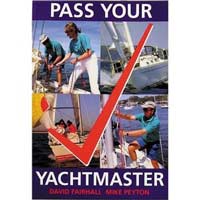 | David Fairhall & Mike Peyton | Pass your Yachtmaster | More of an examination question list with answers than a study guide. |
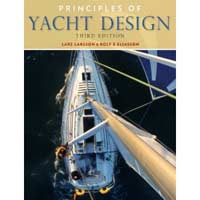 | Lars Larsson & Rolf E. Eliasson | Principles of Yacht Design (3rd edition) | This is, beyond a shadow of a doubt, my yacht hardware reference tome of choice. The authors present a logical, clear route through the complex paths of yacht design that both laypeople and experts can follow and use. The book is filled to the brim with formulæ, but even for those mathematically challenged, the textual and graphical illustrations suffice to make every aspect of yacht design understandable. |
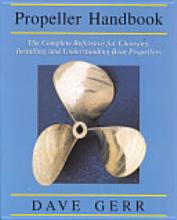 | Dave Gerr | Propeller Handbook | An excellent reference book as well as a textbook for learning what makes the boat go forward when the engine is turned on. |
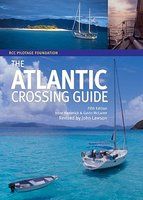 | Anne Hammick & Gavin McLaren | RCC Pilotage Foundation The Atlantic Crossing | I haven’t read this one yet. |
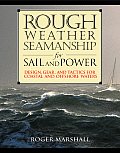 | Roger Marshall | Rough Weather Seamanship for Sail and Power: design, gear, and tactics for coastal and offshore waters | A comprehensive book covering all aspects of heavy-weather, including crew and equipment. I liked the references and citations, and the content is very thought-provoking and modern. |
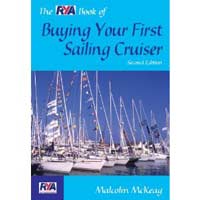 | Malcolm McKeag | RYA Book of Buying Your First Sailing Cruiser | The book is geared toward first-time boat buyers and is a worthwhile read for that audience. |
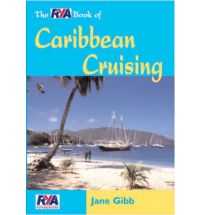 | Jane Gibb | RYA Book of Caribbean Cruising | While it is tough to match the Pavlidis guides, this does add a British view to cruising the islands that is markedly different from the American one. |
 | Andrew Simpson | RYA Diesel Engine Handbook | Some of the engine parts described have not been installed in years, but the book is an excellent introduction to the ins and outs of marine diesels. |
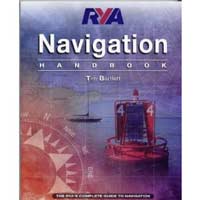 | Tim Bartlett | RYA Navigation Handbook | A short guide covering navigation, ranging from cartography to GPS via celestial navigation. |
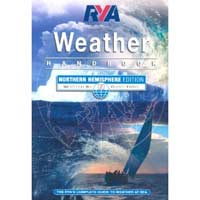 | Chris Tibbs | RYA Weather Handbook, 2nd ed., northern hemisphere | As with other RYA publications, the content is clearly presented in a style that includes numerous diagrams and language that, while concise, is legible and valuable to a broad audience ranging from neophyte lake sailors to experienced blue-water sailors. This is an excellent addition to a shipboard library, given its small paperback footprint. |
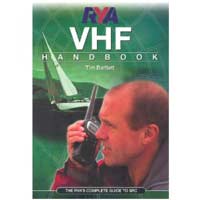 | Tim Bartlett | RYA VHF Handbook | A short guide to the information and knowledge necessary to pass the international SRC (Short Range Certificate) examination, and worth keeping on board for reference on correct radiotelephony procedures and DSC use. |
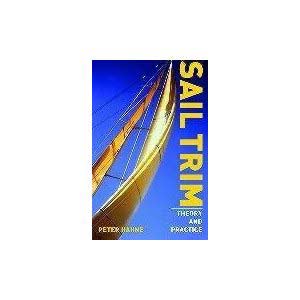 | Peter Hahne | Sail Trim: Theory and Practice | I purchased this book on the spur of the moment from Amazon while ordering other books, and it turns out that this little paperback is a true gem and, in my opinion, the best book by far when it comes to explaining practical use and setting of sails, along with excellent descriptions of the aerodynamic forces. I found the writing style somewhat terse and stilted until I checked the book information and realized I was reading an English translation from German, and suddenly everything was clear. |
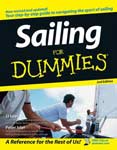 | J. J. Isler & Peter Isler | Sailing for Dummies (2nd Edition) | I was given this book by a friend and shied away from reading it as if it contained a communicable disease that I’d contract if I so much as cracked the cover. But one night I opened a Carib beer and the book and found that, contrary to my expectations, it was well written and really did touch on most subjects. While it is not necessarily a reference book, it is worthwhile to get a broad idea of many subjects and terms in sailing. |
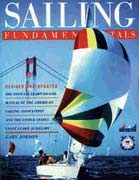 | Gary Jobson | Sailing Fundamentals | The initial ASA book from which I learned. A good start and, even after absorbing the contents of more detailed books, it still manages to be interesting reading. |
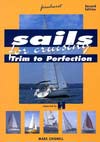 | Mark Chisnell | sails for cruising – Trim to Perfection | A well-written paperback book sponsored in part by Hyde Sails (they don’t advertise in the book or push their sails). I like the different types of analogies they use, and the book does an excellent job at explaining the dynamics of sail use and contains numerous pictures that help illustrate the various settings and things to look for. |
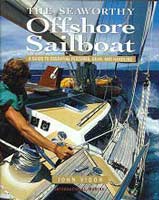 | John Vigor | The seaworthy offshore sailboat | This is one of the few books I still keep and re-read, despite often disagreeing with the author’s conclusions. |
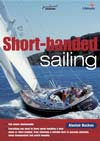 | Alastair Buchan | Short-handed Sailing | An outstanding paperwork well worth re-reading. While the author is mercifully short on personal opinions on specific methods, he goes the distance in listing the various aspects of shorthanded and single-handed sailing that are markedly different from sailing with a whole crew. The only chapter not worth re-reading is that on berthing – not because of any problems with the chapter, but because the techniques remain the same regardless of the number of people aboard the boat. I can heartily recommend this book even for those who sail with a whole crew. |
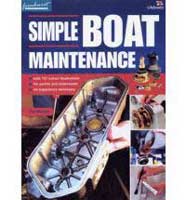 | Pat Manley | Simple Boat Maintenance – DIY for boats and motorboats | The illustrations make some standard but seemingly complex maintenance tasks easy to visualize and perform. |
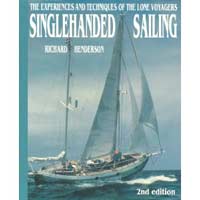 | Richard Henderson | Singlehanded Sailing (2nd edition) | I enjoyed reading this book and took a lot of information from it. However, it was first published in 1992, and much of the technical content is outdated, and many modern innovations are not included. Nonetheless, I would recommend this to any single-handed or short-handed sailors. |
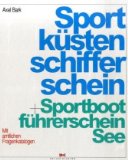 | Axel Bark | (German)Sportküstenschifferschein + Sportbootführerschein | This is the German textbook for the SSS license, the German equivalent of the RYA Yachtmaster. Oddly enough, the Germans only have a basic license that is required for pretty much any ship. Still, after that relatively simple license (which requires almost no practical skills, just a lot of memorization), there is nothing else unless one wishes to become a commercial captain. As with all German textbooks that I’ve had the misfortune to work with in the past, the material, while well-presented, is about as dry as it can be made. Nonetheless, this book is chock-full of important information and makes a great reference work. |
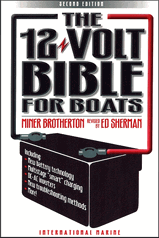 | Miner Brotherton & Edwin Sherman | The 12-Volt Bible for Boats (2nd Edition) | This is an excellent guide to 12-volt systems commonly found on boats and is highly recommended. |
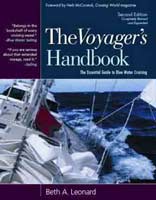 | Beth A. Leonard | The Voyager’s Handbook: The Essential Guide to Blue Water Cruising | While not a classical reference book, it goes into detail about the human factors of cruising and is a worthwhile read. |
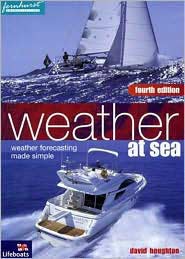 | David Houghton | Weather at Sea (6th Edition) | I find the weather to be a fascinating but very complex subject, and this book does an excellent job of describing how the weather patterns emerge and how they affect route planning and passage-making tactics. |
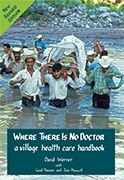 | David Werner | Where There Is No Doctor, a village health care handbook | Perhaps the best book on health care for those times when one is far away from medical care. This is published both in paper form and as a downloadable PDF by the Hesperian Foundation (along with many other fine books). The 8.5Mb PDF file can be downloaded from the Hesperian Foundation, and I have a local copy on my manuals page. |
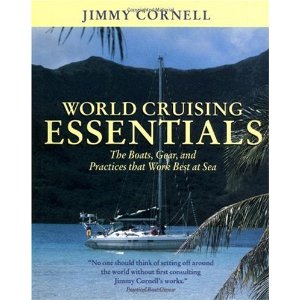 | Jimmy Cornell | World Cruising Routes (6th edition) | This book covers the significant (and minor) aspects of going off and cruising, and it’s a great read. |
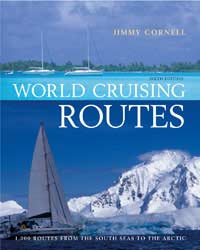 | Jimmy Cornell | World Cruising Routes (6th edition) | Not without reason has this book (first published in 1987) been in print since the first edition. No boat and no sailing dreamer’s bookshelf should be without this book, which is nonpareil. I have two copies, one on the boat and one in my bookshelf. I constantly look at the routes and times and play mind games about when I could sail to which destination, using a traveling salesman-type plan for the places I would like to visit. |
